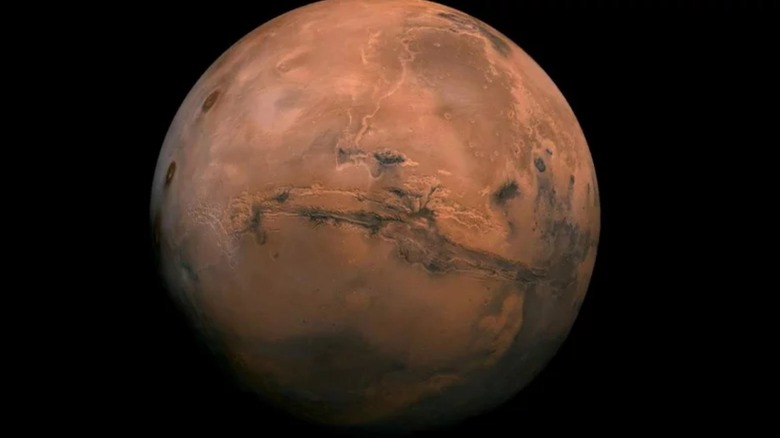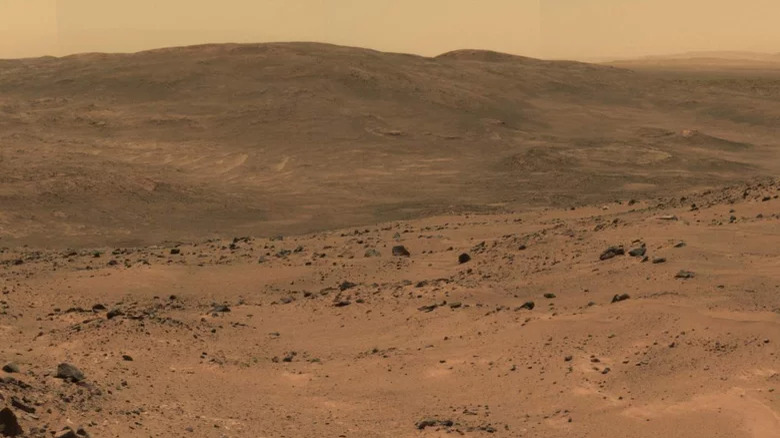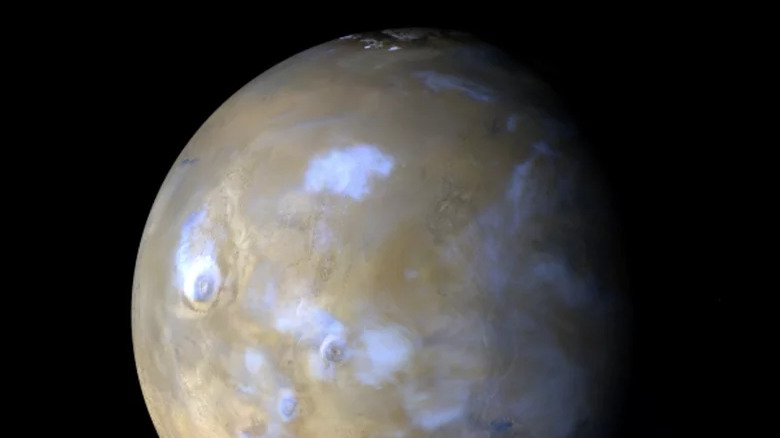This Is Why Mars Is So Much Smaller Than Earth
The inner planets of our solar system, Mercury, Venus, Earth, and Mars, are all similar in some ways. They are rocky planets with a firm surface like Earth's, and they are much smaller than the gas giants Jupiter and Saturn. But they differ in many ways too, in terms of their size, mass, and atmospheres. To understand the conditions on each planet, you need to know about their size and how they developed. Here's what I've learned about the formation of Mars over my career, including interviewing scientists and engineers working on current Mars missions.
One reason that Mars is such a focus of study, with rovers and landers being sent there and many people interested in whether humans could live there long-term, is that it is the planet in our solar system which is most similar to Earth. But a key difference between the planets is their size, with Mars being about half the size of Earth. This affects everything from the gravity to the weather there.
According to NASA, the radius of Mars is around 2,106 miles or 3,390 kilometers. But, like Earth, Mars isn't perfectly round. It actually bulges a little around the equator due to its rotation.
How Mars formed
We know that Mars formed around 4.5 billion years ago. We're still learning about how planets formed in the early solar system, but Mars is a great place to learn about this as it has some extremely ancient rocks on its surface (via Digital Trends). Unlike Earth, which is tectonically active and so recycles rocks over billions of years, Mars doesn't have tectonic activity. That means that its oldest rocks stay on its surface where they are available for study. The Perseverance rover, which is currently exploring Mars, is planning to visit some of the oldest known rocks near to the Jezero crater, which are thought to be 4 billion years old. Studying these can help us learn more about the formation of both Mars and the other rocky planets.
We do know that planets form from clouds of dust and gas which swirl around stars like our sun (via NASA). Before there were planets, there was a swirl of dust and gas which was thicker in some places than others. Gravity acted on this swirl to pull it into clumps and form the basis of planets, called planetesimals. A planetesimal attracted more material because of its gravity, growing to eventually become a planet. The size of the planet would depend on how much material was available and how lumpy the original cloud of dust and gas was.
How Mars's size affects the conditions there
One of the main effects of Mars being smaller than Earth is that its gravity is different. Gravity there is around one third the strength of gravity on Earth, because there is less mass attracting things to its surface. This can be useful for exploration in some ways – for example, the Ingenuity helicopter is able to fly there in part because the lower gravity makes it easier to get off the surface (via Digital Trends). But it causes problems in other ways, like making the atmosphere very thin.
The atmosphere on Mars is just 1% of the density of the atmosphere on Earth, and it is mainly composed of carbon dioxide so it isn't friendly to humans. If humans ever do set foot on Mars, they'll need to stay in spacesuits or in sealed habitats at all times. Because of the low gravity, Mars cannot hang on to its atmosphere and it has lost atmosphere into space over time (via NASA).
This might also be what happened to Mars's water. Astronomers are confident that there was once liquid water on Mars, billions of years ago, as we can see evidence of flowing water in rock formations on its surface (via ESA). But now Mars is dry and barren, with basically no liquid water on its surface and only ice at its poles and under its surface.
Experts are still debating exactly how long the water was there and what happened to it, but a leading theory is that Mars once had a water cycle similar to Earth's (via Max Planck Society). Water on the surface was hit with the sun's rays and evaporated up into the atmosphere. But once it reached the atmosphere and splits into hydrogen and oxygen, the planet's lower gravity meant that some of the lighter hydrogen was lost into space. Over time, this meant there was less and less water on the planet.
Mars's relatively low mass may also play a part in one of its strangest and most distinctive features: The global dust storms which can periodically cover the entire planet. According to NASA, these global dust storms happen every few years and have so far only been observed on Mars. Mars is the dustiest place in the solar system, and because of the low gravity it is easy for these small particles to be picked up by the wind.
We're still not sure exactly how a dust storm can spread across an entire planet, but weather instruments on the Perseverance rover are studying the weather there to try to learn more (via Digital Trends). And the story of Mars's size and development isn't only a matter of history, as it directly affects exploration there now. Mars's dust could be one of the major obstacles to exploring it, as dust can damage delicate electronics and cover over solar panels, as happened with the rover Opportunity which lost communication in 2018.
If we want to explore Mars more in the future, we'll need to find ways to address issues like how to design machines which can cope with the dust and how to build spacesuits which can keep astronauts there safe.


